And that was the destination I was most looking forward to on my South American adventure to explore one of the most remote inhabited islands on earth.

Rapa Nui, “deserted island” in the language of the indigenous people, is a small volcanic island perched in the middle of the vast Pacific Ocean. To get there, tourists usually fly from the capital Santiago de Chile, or buy a cruise tour that takes months at sea. Many tourists often call this Easter Island, marking the event when Dutch captain Jacob Roggeveen, the first European to accidentally discover this island on Easter in 1722. But I still prefer to call the island Rapa Nui because of the impression of the vibrant visual culture that the people here built thousands of years ago, which still exists today.
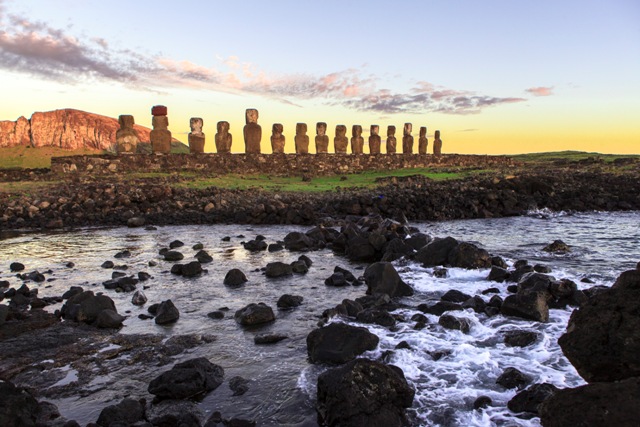
Heritage of mystical culture
Despite the high cost of transportation and accommodation for a backpacker, I still wanted to set foot on this remote land to witness the mysteries with my own eyes. I could feel the unique indigenous culture of Rapa Nui as soon as I landed at the airport with the Moai statues simulating a mysterious culture. Even in modern times, the Rapa Nui people still want to preserve their unique and unchanging culture, even though the number of tourists setting foot on the island is increasing. They have issued some "rules" for tourists before completing the entry procedures to the island. One of the immutable rules is not to touch the Moai. On the island there are still 887 Moai statues that have stood the test of time, most of which have no protective fences. Touching them means you have touched the visual culture of the Rapa Nui ancestors that has been preserved by them for thousands of years. Or more simply, you have encroached on the invaluable asset that has brought in a large number of tourists when the resources, climate, and soil here are not enough to support the 6,000 residents on the island.
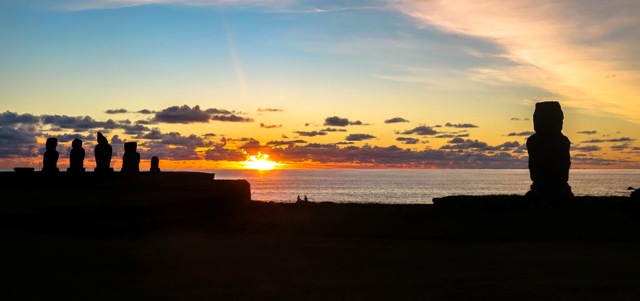
The area of Rapa Nui is only 163.3km2, only 1/4 of the area of Phu Quoc, but behind that smallness lies a large and mysterious civilization. We have days to rent a car to travel around the island, which is a convenient way for you to explore Rapa Nui more when the time here is not long. A small island that does not possess any resources other than rocks, forests, and wild fruits, but contains very delicate architectural works and symbols that make the whole world admire.
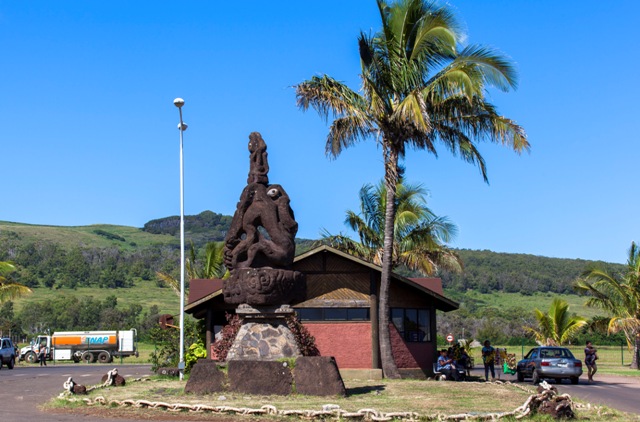
One of the mysteries is that most of the rows of Moai statues stand in rows facing the inside of the island, unlike what I thought that those statues should face the ocean to protect the island. Perhaps from ancient times, the Rapa Nui people did not expect people from the ocean out there, but they just wanted to turn to their roots, their customs or strengthen the long-standing belief system that protects their lives every day and every hour. This is completely appropriate when the ancient Rapa Nui people, with traditional costumes, wearing earrings, large bodies, dark skin from the sea and full of tattoos on their bodies, look at tourists with skeptical eyes, a very visual expression to outsiders. For them, could those strange tourists sweep away their unique cultural values one day?

A few times I tried to smile at them but the response was mostly indifference and caution. Some tourists who tried to touch the Moai statues, mainly just to feel the truth about the mysterious stone statues, were dealt with regardless of who they were. Each time they did so, tourists could be fined up to 500 USD. I like this kind of ostentatious, obvious visual culture of the Rapa Nui people to be able to keep their identity and spiritual values forever.

We spent two days exploring the island’s most famous Moai statues by renting a self-drive car in the town center. Rapa Nui is shaped like a triangle with volcanoes at its peaks, the only source of fresh water on the island. The wild nature at the end of the world made us feel like we were living in a different world than our current life. Although the northern region does not have a road system to fully connect the island, the road system on the island is enough for us to travel freely, enjoying the strong winds like other tropical islands in Asia - Pacific.
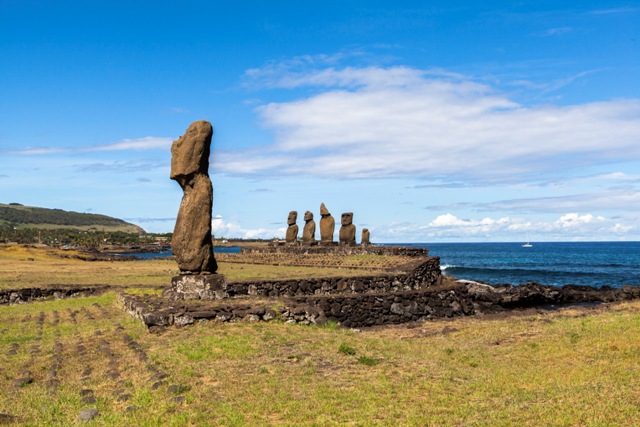
The Moai statues are still standing, their faces are cold, some of them wearing red hats made of volcanic slag. Many people participated in building them, plus a lot of resources and time. Many archaeologists also try to understand the construction materials, how to transport the Moai statues weighing dozens of tons and some statues still in the process of being unfinished, up to 21m high and weighing hundreds of tons. A small island formed from a volcanic eruption in the middle of the ocean, the Rapa Nui people spent so much resources to build such giant statues.

The more Moai people built, the more wood the Rapa Nui people needed to transport the giant stone statues to the high stone platforms close to the sea. They cut down the forest to the point that there was not a single tree left on the island. The lack of means meant that the construction of the stone statues was stagnant. In addition, the island's population grew, food sources were gradually depleted, epidemics were rampant, bloody civil wars and cannibalism made the Rapa Nui civilization increasingly shaky and gradually disappeared. This was also the problem that made me think when I visited the stone statues lying abandoned in the Rano Raraku volcanic quarry on the island. A civilization that disappeared could also be due to the overemphasis of visual elements that their ancestors could not control.
The world of nature lovers
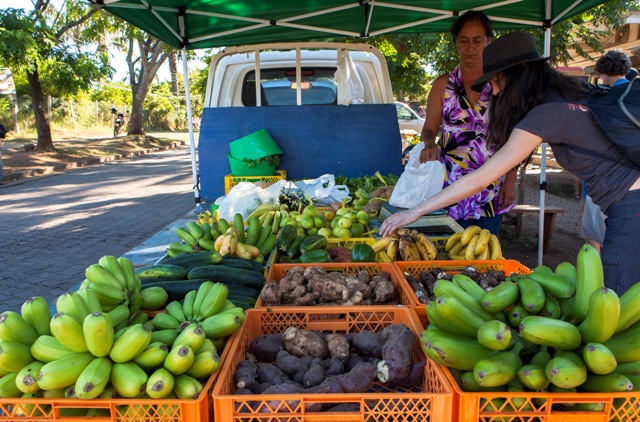
I consider myself a nature lover and choosing Rapa Nui to relax after a long journey of exploring South America was a worthy reward. Four days on the island was enough for me to be in harmony with the wild nature, not much affected by modern life. I spent afternoons immersing myself on Anakena beach with coconut forests laden with fruit winding along the white sand dunes. Legend has it that this was the first place where the ancestors of the Rapa Nui people set foot on the island after an almost unimaginable migration journey across the vast, dangerous ocean. This place also seemed to be the last stop in the migration journey of modern humans tens of thousands of years ago to distant lands in South America. A small, peaceful bay facing the Pacific Ocean helped me dispel my fatigue, feel at peace and imagine the peaceful life of the island guarded by a row of majestic and mysterious Moai statues.
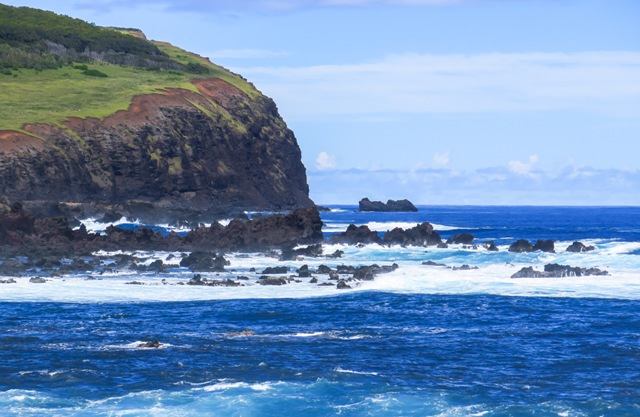
Everything on Rapa Nui is quite expensive because it has to be brought in from the mainland. This is true because airplanes are a common way to get products and consumer goods to the island. We stayed at a campsite by the sea and close to the town of Hang Roa. The campsite was run by the host and shared the kitchen. If you go to the local market, which is a collection of pickup trucks parked in the town center in the mornings, and cook for yourself instead of going to a restaurant, you will save a lot of money.

Seafood, especially fish, is a relatively cheap food source on the island because it is also an economic source to support the islanders, after tourism. A day driving around Rapa Nui, we can have a quick lunch of sandwiches and cheese bought from the capital Santiago, but in the afternoon we have hearty meals cooked by ourselves. One day, we even made a salad with the taste of home by asking for a large banana flower from a nearby house.
Rapa Nui is wild, so the seeds brought by birds help create wild guava forests along the roadside, full of ripe fruit in the spring. Sometimes, our lunch consisted of a few chocolate bars and guava, a red-fleshed guava, not very large but sweet enough to make you faint. We had read about this before deciding to find such free guava forests on the island. Nature here is truly generous to travelers.
I also had moments of watching the sunset until the yellow lights began to flicker on some roads around the town center. At night, the space on the island was quiet, peaceful and only the sound of waves lapping against the volcanic cliffs could be heard. On moonlit nights, the rows of Moai statues stood out like the eternal cultural halos at the end of the world.
More information:
+ Itinerary: From Vietnam, you can use the services of several airlines to get to the capital Santiago of Chile, transiting from 1 to 3 points in Sydney, Auckland, Doha or Sao Paulo... The price for this round-trip flight is from 1500 - 2200 USD depending on the time. From Santiago, you continue to fly directly to Rapa Nui Island with Latam domestic flights in South America, the price ranges from 300 - 600 USD round-trip.
+ Activities: You should spend at least 1 to 2 days cycling around Rapa Nui. This will be a great experience for you when you witness herds of horses leisurely grazing on the blue beach of the Pacific Ocean, Moai statues scattered from ages past as if protecting this mysterious island. Rent a bike at the campsite or in the center of Hanga Roa town.
+ Souvenir: Go to the post office on Rapa Nui island to get the Moai symbol stamped in your passport.
+ Experience: And below are the things not to be missed at Rapa Nui:
-Swim in the sea and pick coconuts at Anakena beach, where legend has it that the ancestors of the Rapa Nui people came here from the West.
-Watch the magical sunset at the top of Orongo volcano,
-Visit the natural Rano Raraku volcanic rock quarry that the Rapa Nui people used in ancient times to create the mysterious Moai statues,
-Enjoy wild guava with red flesh that grows along many roads on the island,
-Cook your own meals to save money and stay at a homestay with the Rapa Nui people,
-Watch the dances of local people gathered in the afternoons,
-Kayaking around the island,
-Go fishing with the Rapa Nui people in the Pacific Ocean.
+ Currency: Chile uses Peso (CLP) in transactions. Tourists are advised to exchange money from USD to CLP on the mainland, then you will get an exchange rate of 1 USD for approximately 650 CLP. But if you bring USD to exchange on the island, the exchange rate will drop to 1 USD = 500 CLP. In Hang Roa town, there are several state banks, you can bring your passport to exchange money during business hours during the week.
+ Accommodation: Hotels and resorts on the island are quite expensive with prices ranging from 250 - 300 USD/room. However, you can also find a camping area around town and rent a tent for 15 - 20 USD/tent, or rent a double room in this area for 50 - 55 USD/room.
Article and photos: Nguyen Hoang Bao


































